 |
       |
 |
       |
NSD students perform Pancha-no Vesh in Bhavai style - Dr. S.D. Desai e-mail: sureshmrudula@gmail.com Photos: Anil Rathod May 20, 2019 What and How are both significant in Bhavai, the folk theatre form of Gujarat, as they are in any other regional forms like Jatra and Nautanki. Its narrative has something to do with the masses and has contemporary social relevance with glimpses of universal significance as well. Its improvisational style entertains the illiterate and the educated, those growing up and grown-up. With strong elements of both these added to the acting talent of drama students as participants in it, Pancha-no Vesh in Rajoo Barot's direction was very well received at the Tagore Memorial Hall (Ahmedabad) on May 13. 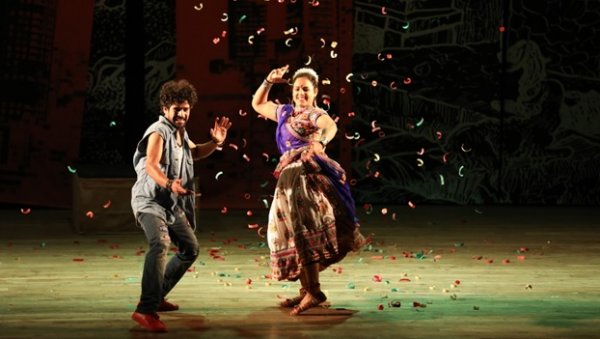 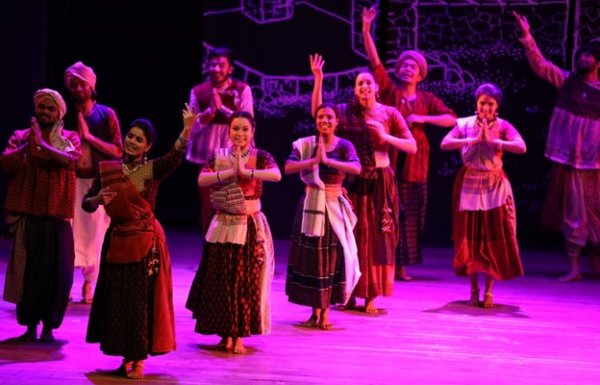 Drama students need, among other things, a close familiarity with our classical theatre tradition, urban theatre modelled on western practices as also our varied folk theatre styles. National School of Drama (NSD), New Delhi, as part of its policy gives its second year students an exposure to a region-specific folk theatre style. This year, they came to Gujarat and under the guidance of veteran Gujarati theatre person Rajoo Barot, assisted by Shailesh Prajapati, did a workshop and this production with dedication and passion. For the script, he turned to Jhaverchand Meghani's (1896-1947) story which was dramatized by Paresh Vyas (in Hindi, with occasional bursts in Gujarati). Meghani knew the pulse of the rural population and his pen could capture their robust life traits and the values they held dear. Recognizing the patriotic fervour he so powerfully celebrated in his songs and stories, incidentally, Mahatma Gandhi hailed him as Rashtriya Shayar (national poet). A fiercely independent temper and supremacy of the will of the people of the land find thematic focus in the story-turned-play. Its topicality prompted the director to set it to the Bhavai form and he gave it the title Pancha-no Vesh. Vesh is a dramatic act, the like of which Asait Thaker, the originator of the form wrote as many as one each could be performed every night of a year some 700 years ago. The Queen of an unknown state has plans to take over all the land that belongs to the farmers. Pancha's father leads a protest and gets killed. Furious and determined at the age of ten, Pancha kills an officer, flees to the hills and raises a Sena with warrior-like farmers from surrounding villages. With the right cause on their side they defeat the Queen. Pancha hands over reins of power to an urban leader with a shrewd lieutenant. With support from aristocrats, the lieutenant assassinates his master and takes power in his hands crushing aspirations of farmers and the poor. Pancha rises in revolt again and overthrows the exploiters. Instead of basking in power, he transfers all powers to the people, but not without warning that if they did not work for the unprivileged he would come again. 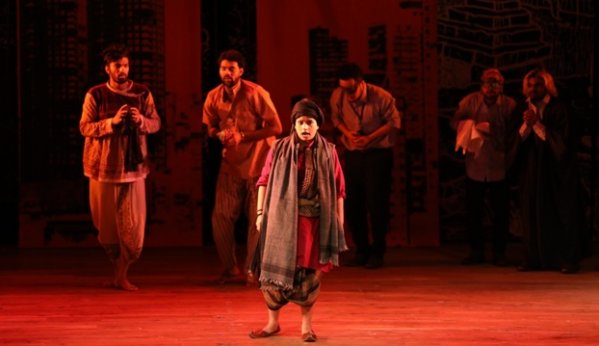 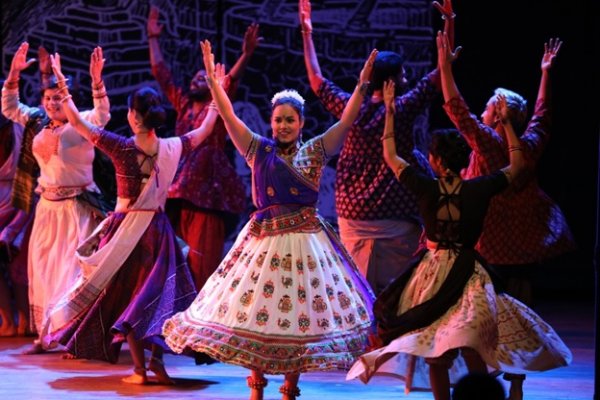 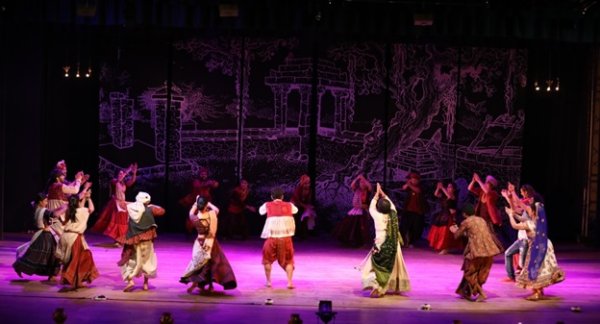 With this script having universal and contemporary overtones in hand, Rajoo's half the battle is won. To boost him further, he has the skills of aspiring drama students from across the country, talented assistants and his own creative imagination. Reversing the old tradition, he has a young woman Smriti with a spark portray the central male role. She invests her Pancha with controlled dynamism, glowing confidence and a sparkling vision with compassion. Again, Puneet's Ranglo in his modern attire is different from the traditional one, not accustomed to typical Bhavai steps and yet with his abandon he gives promising glimpses of versatility. Ranglee as a character in the Bhavai form is of recent origin and Sugandha with an ebullient face and her steps showing a dancer's ease is cast well. Oh, but how many of around thirty passionately committed actors can be mentioned in this limited space! The performance has the conspicuous absence of Nar (male) and Maada (female) indigenous instrumental pair of Bhungals. Pretty talented young musicians Kedar and Bhargav with Kirtan on the tabla come close to providing lilting rhythm to the traditional steps, Gujarat's folk dances and specially written heroic songs charmingly presented. Moving on gradually from invocations to Lord Ganesha and Ma Kali, the play gives a feel of the fullness of life. All dances in the play have been competently choreographed by Vaishali Trivedi. The costumes designed by Arpita Dhagat give identity to the characters, make scenes pleasingly colourful and their movement comfortable. The set design is also by her and light designs are by Anirban Banik. For the changing locale, Pratapsinh has painted backdrops and Bhakti has been in charge of numerous stage props. After performing it in China (May 17 to 20), the production will be staged in Delhi (May 23 to 25). Dr. S.D. Desai, a professor of English, has been a Performing Arts Critic for many years. Among the dance journals he has contributed to are Narthaki, Sruti, Nartanam and Attendance. His books have been published by Gujarat Sahitya Academy, Oxford University Press and Rupa. After 30 years with a national English daily, he is now a freelance art writer. |